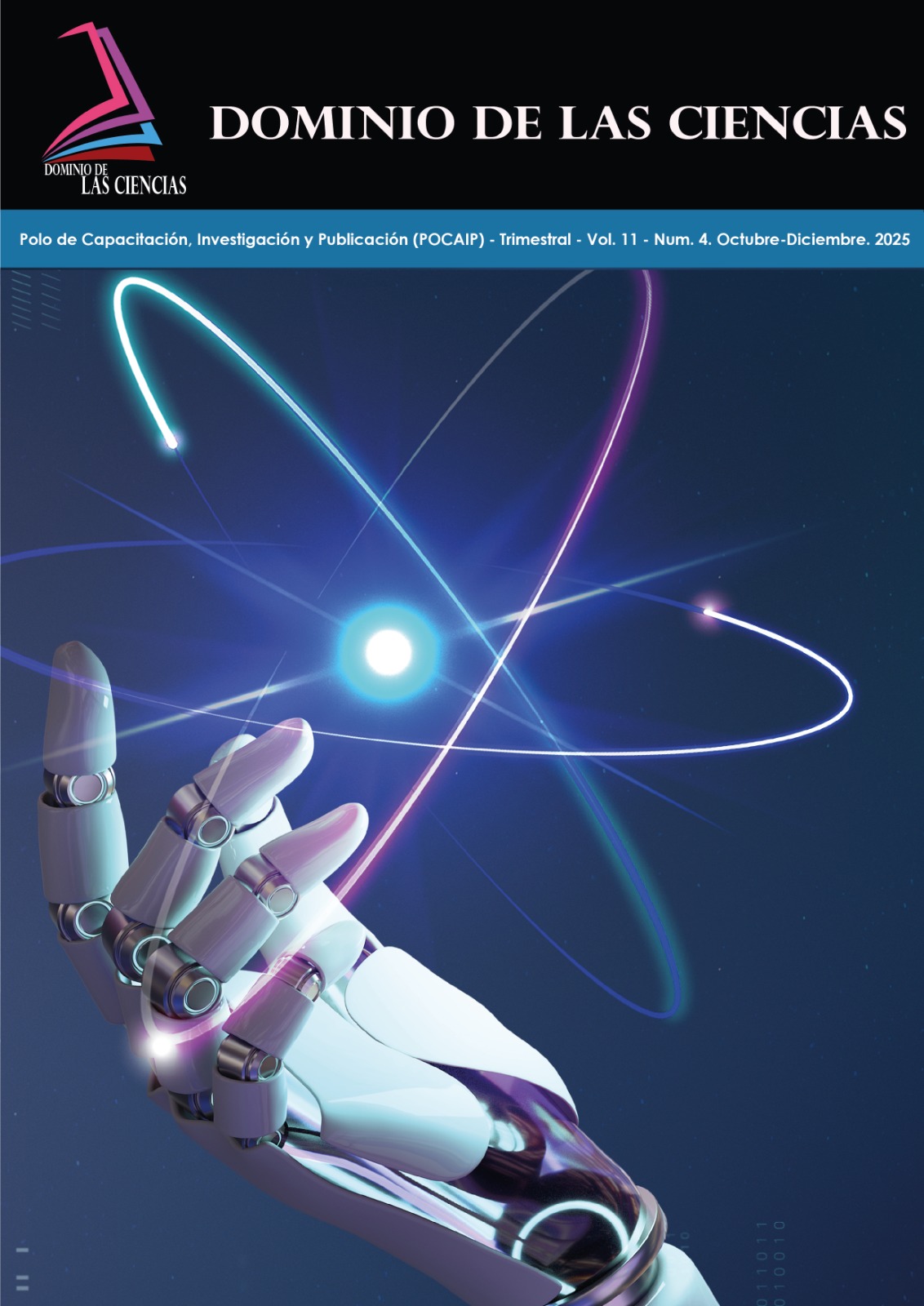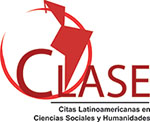Aplicaciones de la biotecnología en la mejora de la fertilidad y reproducción asistida en cerdos
DOI:
https://doi.org/10.23857/dc.v11i4.4546Palabras clave:
Fertilidad animal, inseminación artificial, criopreservación embrionaria, biotecnología reproductiva porcinaResumen
El presente artículo tiene como objetivo analizar las principales aplicaciones de la biotecnología reproductiva en la mejora de la fertilidad y reproducción asistida en el cerdo, evaluando los avances alcanzados en técnicas como inseminación artificial (IA), fertilización in vitro (IVF), microinyección intracitoplasmática de espermatozoides (ICSI), transferencia embrionaria no quirúrgica profunda, criopreservación y vitrificación. El estudio busca integrar los aportes científicos más recientes para identificar los factores técnicos y biológicos que limitan o potencian la eficiencia reproductiva porcina. Se realizó una revisión sistemática descriptiva basada en literatura científica indexada en PubMed, Scopus, ScienceDirect, SpringerLink y Latindex, abarcando el período comprendido entre 2019 y 2025, aplicando combinaciones de descriptores controlados (MeSH y DeCS) y operadores booleanos relacionados con biotecnología reproductiva, fertilidad y especie porcina. La inseminación artificial se consolidó como la técnica más difundida y rentable, las técnicas de IVF y ICSI mostraron progresos en el desarrollo embrionario mediante optimización de medios de cultivo, activación ovocitaria y control de daño espermático; sin embargo, la eficiencia sigue siendo inferior respecto a otras especies domésticas. La transferencia embrionaria no quirúrgica profunda emergió como alternativa viable frente a la laparotomía, ofreciendo resultados reproductivos comparables cuando se utilizan embriones frescos o vitrificados. En el ámbito de la criopreservación, la vitrificación se destacó como la técnica más prometedora al minimizar el daño estructural celular, aunque persisten alteraciones moleculares y epigenéticas que afectan la viabilidad embrionaria, finalmente, se reconoce el potencial de la manipulación androgenética y la edición génica (CRISPR/Cas9) para modular la calidad espermática, resistencia a enfermedades y mejora genética controlada. En conclusión, la biotecnología reproductiva en cerdos ha experimentado una expansión significativa, pero aún enfrenta limitaciones derivadas de la fisiología específica de la especie, aunque con el empleo de estrategias integradas proyecta un futuro orientado hacia una reproducción más eficiente, sostenible y controlada genéticamente.
Citas
Almiñana, C., Dubuisson, F., Bauersachs, S., Royer, E., Mermillod, P., Blesbois, E., & Guignot, F. (2022). Unveiling how vitrification affects the porcine blastocyst: Clues from a transcriptomic study. Journal of Animal Science and Biotechnology, 13(1), 46. https://doi.org/10.1186/s40104-021-00672-1
Araujo, A. C., Johnson, J. S., Graham, J. R., Howard, J., Huang, Y., Oliveira, H. R., & Brito, L. F. (2025). Transgenerational epigenetic heritability for growth, body composition, and reproductive traits in Landrace pigs. Frontiers in Genetics, 15, 1526473. https://doi.org/10.3389/fgene.2024.1526473
Balogun, K., & Machaty, Z. (2025). Development of IVF Porcine Embryos in Microwell Culture System. Animals, 15(17), 2528. https://doi.org/10.3390/ani15172528
Bian, C., Prakapenka, D., Tan, C., Yang, R., Zhu, D., Guo, X., ... & Hu, X. (2021). Haplotype genomic prediction of phenotypic values based on chromosome distance and gene boundaries using low-coverage sequencing in Duroc pigs. Genetics Selection Evolution, 53(1), 78. https://doi.org/10.1186/s12711-021-00661-y
Briski, O., La Motta, G. E., Ratner, L. D., Allegroni, F. A., Pillado, S., Álvarez, G., ... & Salamone, D. F. (2024). Comparison of ICSI, IVF, and in vivo derived embryos to produce CRISPR-Cas9 gene-edited pigs for xenotransplantation. Theriogenology, 220, 43-55. https://doi.org/10.1016/j.theriogenology.2024.02.028
Chen, P. R., Uh, K., Redel, B. K., Reese, E. D., Prather, R. S., & Lee, K. (2022). Production of pigs from porcine embryos generated in vitro. Frontiers in Animal Science, 3, 826324. https://doi.org/10.1095/biolreprod.112.104471
Garcia-Canovas, M., Parrilla, I., Cuello, C., Gil, M. A., & Martinez, E. A. (2024). Swine in vitro embryo production: Potential, challenges, and advances. Animal Reproduction Science, 270, 107600. https://doi.org/10.1016/j.anireprosci.2024.107600
Gil, M. A., Parrilla, I., Cuello, C., & Martinez, E. A. (2024). Current status of nonsurgical embryo transfer in swine. Reproduction, Fertility and Development, 37(1). https://doi.org/10.1071/RD24137
Haug, L. M. D. (2024). Porcine oocyte quality, in vitro embryo production and storage. https://hdl.handle.net/11250/3121241
Ju, W. S., Kim, S., Lee, J. Y., Lee, H., No, J., Lee, S., & Oh, K. (2025). Gene editing for enhanced swine production: Current advances and prospects. Animals, 15(3), 422. https://doi.org/10.3390/ani15030422
Kim, S. W., Gormley, A., Jang, K. B., & Duarte, M. E. (2023). Current status of global pig production: an overview and research trends. Animal bioscience, 37(4), 719. https://doi.org/10.5713/ab.23.0367
Lin, Q., Torigoe, N., Liu, B., Nakayama, Y., Nakai, A., Namula, Z., ... & Otoi, T. (2024). Efficient gene editing of pig embryos by combining electroporation and lipofection. Veterinary World, 17(11), 2701. https://doi.org/10.14202/vetworld.2024.2701-2707
Lin, Y., Wu, D., Che, L., Fang, Z., Xu, S., Feng, B., ... & Li, L. (2022). Dietary fibre supplementation improves semen production by increasing leydig cells and testosterone synthesis in a growing boar model. Frontiers in Veterinary Science, 9, 850685. https://doi.org/10.3389/fvets.2022.850685
Maes, D., Peltoniemi, O., & Malik, M. (2023). Abortion and fetal death in sows. Reproduction in Domestic Animals, 58, 125-136. https://doi.org/10.1111/rda.14436
Ma?opolska, M. M., Tuz, R., Schwarz, T., Ekanayake, D. L., D’ambrosio, J., Ahmadi, B., ... & Bartlewski, P. M. (2021). Correlates of reproductive tract anatomy and uterine histomorphometrics with fertility in swine. Theriogenology, 165, 44-51. https://doi.org/10.1016/j.theriogenology.2021.02.007
Mellagi, A. P., Will, K. J., Quirino, M., Bustamante?Filho, I. C., Ulguim, R. D. R., & Bortolozzo, F. P. (2023). Update on artificial insemination: Semen, techniques, and sow fertility. Molecular reproduction and development, 90(7), 601-611. https://doi.org/10.1002/mrd.23643
Mikkola, M., Desmet, K. L. J., Kommisrud, E., & Riegler, M. A. (2024). Recent advancements to increase success in assisted reproductive technologies in cattle. Animal reproduction, 21(3), e20240031. https://doi.org/10.1590/1984-3143-AR2024-0031
Nolen, R. S. (2025). FDA APPROVES GENE-EDITING TECH CREATING PRRS-RESISTANT PIGS. https://www.avma.org/news/fda-approves-gene-editing-tech-creating-prrs-resistant-pigs?utm_source=chatgpt.com
Olanratmanee, E. O., Pearodwong, P., Lewchalermwong, D., & Tummaruk, P. (2025). Fetal losses associated with PRRSV, PPV, and PCV2 detection. The Thai Journal of Veterinary Medicine, 55(3), 1-8. https://doi.org/10.56808/2985-1130.3864
Ou, K., An, K., Hao, B., Kang, J., & Su, J. (2025). Analysis of miRNA expression profiles during spermatogenesis of plateau zokor (Eospalax baileyi) under androgen antagonism treatment. Comparative Biochemistry and Physiology Part D: Genomics and Proteomics, 101636. https://doi.org/10.1016/j.cbd.2025.101636
Palacios Bravo, E. R., Cárdenas Posligua, J. I., Cedeño Arriaga, E. C., & Díaz Campozano, E. G. (2025). Efecto inhibitorio de los aceites esenciales de limón (citrus limon) y naranja (citrus sinensis) sobre fitopatógenos agrícolas a nivel in vitro. Dominio De Las Ciencias, 11(2), 1621–1633. https://doi.org/10.23857/dc.v11i2.4407
Parrilla, I., Cambra, J. M., Cuello, C., Rodriguez?Martinez, H., Gil, M. A., & Martinez, E. A. (2024). Cryopreservation of highly extended pig spermatozoa remodels its proteome and counteracts polyspermic fertilization in vitro. Andrology, 12(6), 1356-1372. https://doi.org/10.1111/andr.13575
Schwarz, T., Ma?opolska, M., Nowicki, J., Tuz, R., Lazic, S., Kopyra, M., & Bartlewski, P. M. (2021). Effects of individual versus group housing system during the weaning-to-estrus interval on reproductive performance of sows. animal, 15(2), 100122. https://doi.org/10.1016/j.animal.2020.100122
Singh, M., Mollier, R. T., Pongener, N., Patton, R. N., Yadav, R., Chaudhary, J. K., ... & Mishra, V. K. (2022). Effect of artificial insemination in comparison to natural mating on the reproductive performance and profitability of smallholder pig production system in Indian Himalaya. Frontiers in Sustainable Food Systems, 6, 1067878. https://doi.org/10.3389/fsufs.2022.1067878
Skoupá, K., Bátik, A., Tošnerová, K., Št'astný, K., & Sládek, Z. (2025). The Effect of Testosterone, Nandrolone and Their Combination on the Structure and Ultrastructure of Muscle Fibres and Myofibrils in Pigs. Anatomia, Histologia, Embryologia, 54(2), e70033. https://doi.org/10.1111/ahe.70033
Somfai, T. (2024). Vitrification of immature oocytes in pigs. Animal Science Journal, 95(1), e13943. https://doi.org/10.1111/asj.13943
Suárez-Usbeck, A., Mitjana, O., Tejedor, M. T., Bonastre, C., Sistac, J., Ubiergo, A., & Falceto, M. V. (2021). Single fixed-time post-cervical insemination in gilts with buserelin. Animals, 11(6), 1567. https://doi.org/10.3390/ani11061567
Xingzhu, D., Qingrui, Z., Keren, C., Yuxi, L., Yunpeng, H., Shien, Z., & Xiangwei, F. (2021). Cryopreservation of porcine embryos: recent updates and progress. Biopreservation and Biobanking, 19(3), 210-218. https://doi.org/10.1089/bio.2020.0074
Descargas
Publicado
Cómo citar
Número
Sección
Licencia
Derechos de autor 2025 José Ignacio Cárdenas Posligua, Alex Adonis Guerrero Quintana, Estefany Raquel Cadena Simbaña, José Rafael Santana Chávez

Esta obra está bajo una licencia internacional Creative Commons Atribución 4.0.
Authors retain copyright and guarantee the Journal the right to be the first publication of the work. These are covered by a Creative Commons (CC BY-NC-ND 4.0) license that allows others to share the work with an acknowledgment of the work authorship and the initial publication in this journal.







